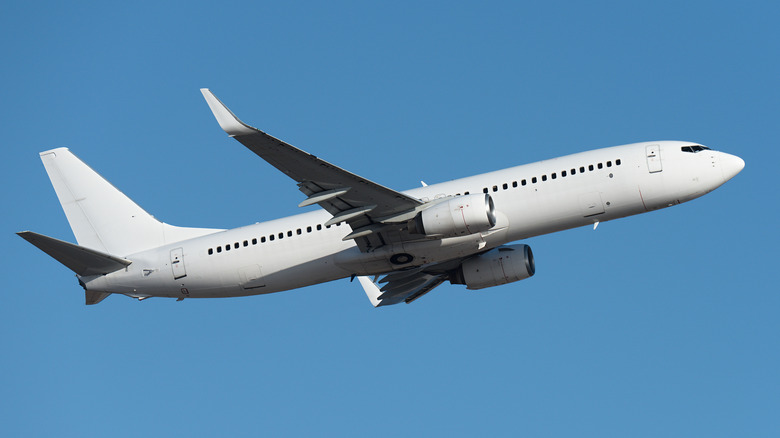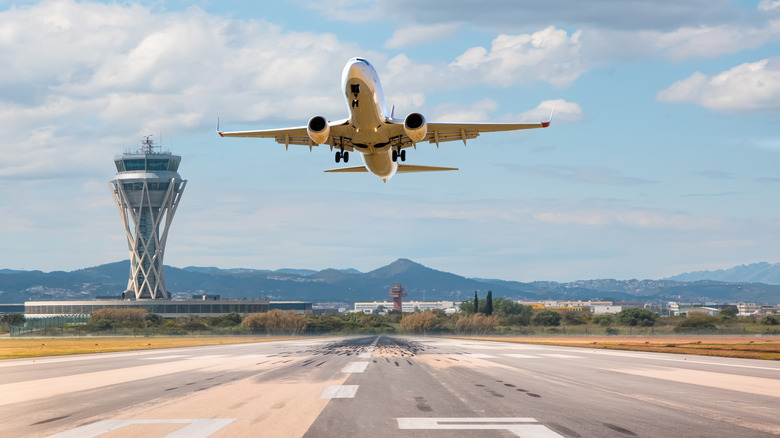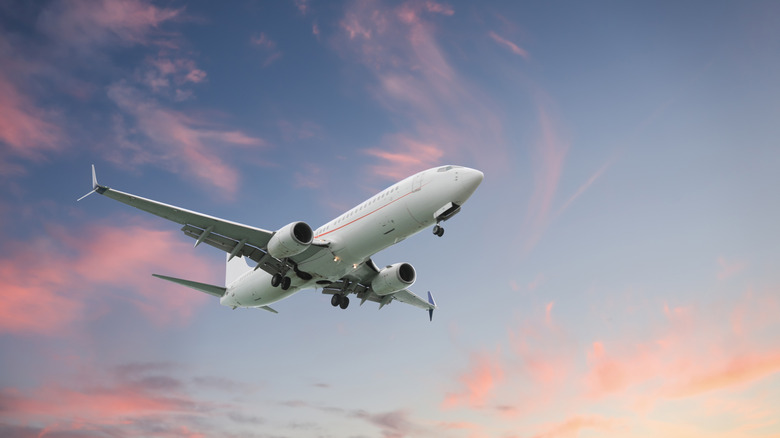How Airlines Choose Which Commercial Jets To Fly
You'd be surprised by how much time airlines spend on deciding which jet from their fleet you'll be flying on for your next trip. For most passengers, what plane you fly on is not even a deciding factor when booking the ticket. But from the airline's perspective, the deployment logistics of that aircraft are a big deal.
The most important thing airlines need to consider is how many people they expect to fly that route. If you're flying between two busy cities, you'll probably end up on a larger jet. On smaller, quieter routes, it doesn't make sense to send a half-empty plane, so airlines go smaller. But it's not just about bodies in seats, it's about which seats. If a route gets a lot of business travelers, airlines are going to favor planes with better premium seating, even if that plane isn't necessarily the biggest available. Take JetBlue, for example, they operate their Airbus A321s with lie-flat Mint seats between Los Angeles and New York as it's a high-demand transcontinental corridor. Those front-of-the-plane premium tickets are where most of the profit comes from.
So, a flight might not be full, but if it's packed with high-paying customers, the airline still wins. And if a route only fills up at certain times of the year, like holidays or ski season, airlines might swap in a bigger aircraft temporarily, just to take advantage of the rush. Some jets offer a better balance of size, range, and comfort, which is why some Boeings rank higher than others. Airlines are constantly adjusting, trying to line up the right plane for what the numbers say they'll need.
Planes have to fit the route in more ways than one
Where a flight is going, and what it has to deal with along the way, matters just as much as who's onboard. Some routes require an aircraft that can handle challenging conditions, be it treacherous runways, salty sea air, or runways with limited space. Not every jet is built for these environments, so airlines have to assign planes that are fit for the job.
And then there's the big question of fuel. It's a huge cost for airlines, so efficiency is the name of the game. If there is a lighter and more fuel-friendly jet that can handle the job, that's generally what they'll opt for. On longer flights, of course, they need something with better range, like the Airbus A350 or Boeing 787 series, but even then, they're still thinking about efficiency. This has become even more important as the industry faces growing pressure to reduce emissions. This is evident when you look at the retirement of the Airbus A380, which was too big and costly to fly.
Airlines also care about what passengers expect. Consistency across the fleet makes life easier for everyone. Passengers know what they're getting, flight attendants know the layout, and maintenance teams don't have to juggle as many variations. Some carriers even stick to one aircraft type entirely on certain routes, like United Airlines' Newark Liberty International Airport to Richmond route, where a Bombardier CRJ-700 is used year-round. It's all about predictability, for the airline and the customer both.
What's available, what fits, and what the numbers say
Even with all the planning that goes into it, sometimes the choice purely comes down to what's available. Airlines run massive fleets, and planes are always moving around between maintenance, international flights, or getting repositioned across the country. Sometimes a plane will get put on a route just because it needs to be somewhere else later, which is why Delta often flies A350s between Los Angeles and Atlanta to position the aircraft for onward international departures. The route doesn't need a wide-body plane, but it means the airline can earn some cash on the way there and keep everything running smoothly.
In the bigger picture, everything has to tie into the logistics of the whole network. Big airlines, especially, have to coordinate flights in waves of arrivals and departures lining up perfectly at their hub airports. If a jet can't land, unload, and take off again in the right window, it might not work for that route, no matter how good it looks on paper. Even when two aircraft have similar capacities, some passenger planes are more expensive to run.
These days, a lot of this is handled by software. Dispatch teams feed in everything from demand forecasts to aircraft readiness, and the system spits out the best match. It's not perfect, but it helps prevent costly last-minute changes, like switching planes and having to move passengers around. At the end of the day, the plane you end up flying on is the result of several big factors all coming together.


